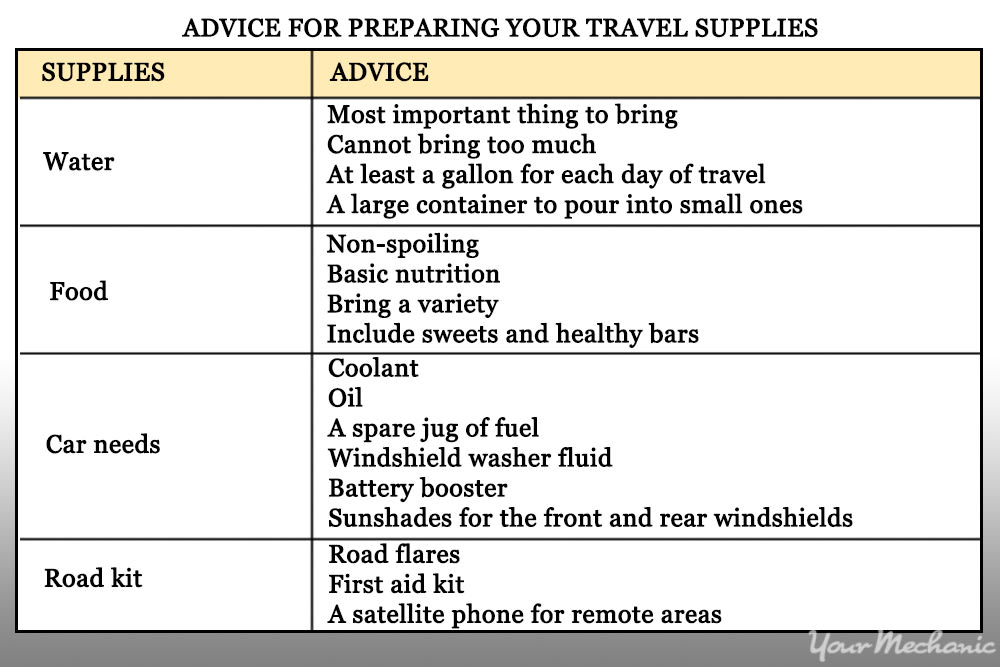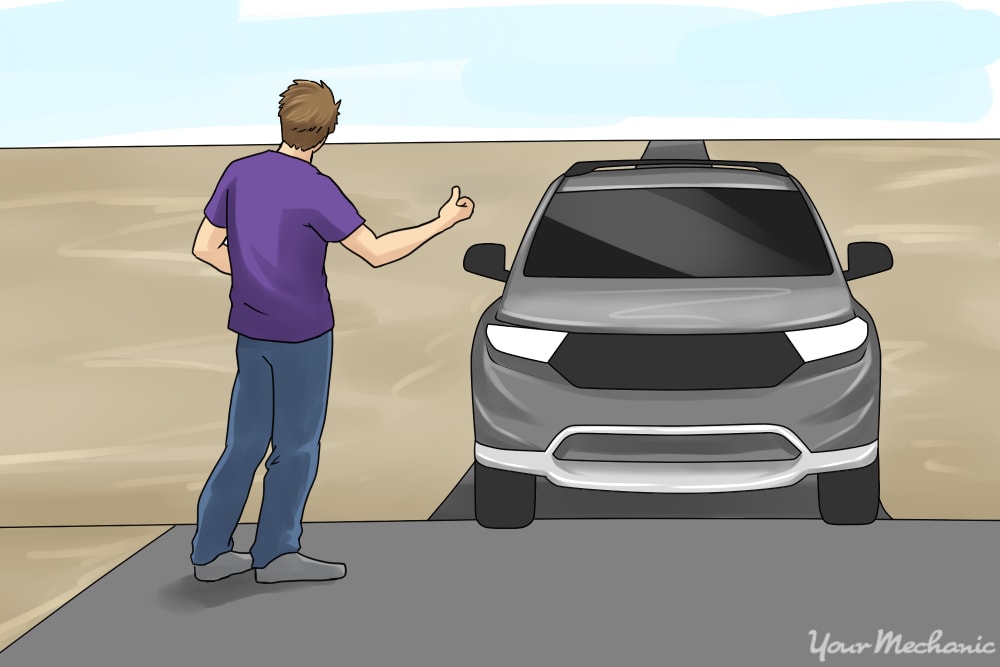

Inclement weather and hostile environments pose a danger to motorists. Plenty of roads go into extremely remote areas, and a good percentage of these will close completely when the weather does not permit safe travel.
Desert roads are particularly tricky, however. In the desert, the engine has a much higher likeliness of overheating due to heat that you cannot simply see from inside of the car.
If you are in the unfortunate situation of being stuck in the desert with a broken down vehicle, then it is important to act quickly and use everything at your disposal to get you and your car to safety.
Part 1 of 2: Before setting off
When travelling in remote areas, especially in desert terrain, preparation is key. Some basic precautions in the beginning could be the difference between being in danger and being inconvenienced in the case of a breakdown.
Step 1: Check the radiator fluid and oil. Learn how to check the radiator fluid and oil in your car.
Overheating is the most likely cause of a breakdown. If you notice the fluid or oil is low, have one of YourMechanic’s certified technicians take a look.
Step 2: Prepare for a tire change. You should also practice jacking the car up and changing the tire.
This allows you to make sure that the jack functions correctly, allows you to check the pressure in the spare tire, and prepares you for a tire change on the side of the road.
Step 3: Check your air conditioner. If your air conditioner is not blowing cold air, consider having it recharged before traveling in high temperatures.
Step 4: Plan your trip ahead of time. Let friends or family members know your travel schedule, and plan on calling them for occasional updates.
Know what roads you will be taking, and look up how frequent gas stations are along those stretches so you can refuel for long stretches.
Step 5: Consider travel times. If you have a flexible schedule, consider travelling early in the day or late at night so as to avoid the hottest temperatures in the middle of the day.
At night, the desert can get very cold, so be prepared.
Step 6: Know common landmarks. Look for landmarks you can use along the way to ensure that you are heading in the right direction.
Getting lost can be extremely hazardous in the desert.
Step 7: Bring other devices. Don’t rely solely on your phone’s battery.
Bring physical maps, a tablet, or a laptop that can be used to help navigate if the gps or cell phone fail. Download maps and weather reports onto devices before the trip.
Step 8: Have supplies ready. Bring all of the supplies you will need for the trip, and don’t plan on being able to restock on the way.
Of course you will be able to pick up basic items at service stations, but pack as if you won’t be so that all of the bases are covered.
Here is a table to help you with some common items:
Tip: Bring powdered drink mix to avoid water toxicity, which can be caused by excessive water intake. Something like Gatorade will work, but more specialized hydration beverages like Heed, for instance, will be more effective. If you are sweating a lot, drink water and sports drinks in a 1:1 ration. Under normal conditions, 2:1 water to sports drink is better.
Tip: If it is legal for you to do so, bring pepper spray of mace with you when travelling in remote areas. Stranded motorists are prime targets for criminals of various shapes and sizes.
Part 2 of 2: When you are stranded
Step 1: Cool down your car. If your car has come to a stop in the desert and will not start back up, it has probably overheated.
Luckily, the engine will probably start back up once the engine has cooled off. To aid in cooling, you can get out and lift up.
Make sure you are pulled over to the side of the road, but don’t get stuck if the ground is too soft to park on. Try to find shade to park under.
Step 2: Check the oil. Check the oil level to determine if it is the problem.
Step 3: Check the radiator fluid. Once the engine is cool, check the radiator fluid.
If it seems low then add more to the radiator.
Step 5: Call a professional. If the engine still does not start when the oil and coolant levels are adequate and the engine is cool, then it is time to call a professional for help.
It may cost a bit extra, but a tow truck can save you a lot of trouble and get you indoors in a pretty short time.
Step 5: Lessen the effects of the sun. Put anything you can in front of the front and rear windshields to lessen the effect of the sun shining through and heating up the car.
Keep the windows open for ventilation, and it may even be necessary to open the doors if the windows do not provide adequate airflow.
- Warning: Stay hydrated and try to eat consistently. Being in extremely hot weather can be really taxing on the human body.
Step 6: Get help from another motorist. If you cannot contact help for some reason, then you are really in a serious situation and need to get help from a passerby.
Prioritize yourself over your things, and be prepared to abandon your car to travel to the nearest town for tow services and a power outlet.
Signal a passing motorist by lighting a road flare or waving your arms in the air to show that you are in distress. It may be helpful to make a sign saying “help” or ‘“S.O.S.” and to place it on or near the car.
Ideally, if you stop someone and they offer help, try to use their phone to call a tow truck. Avoid hitching a ride with a stranger at all costs. If you must, then act normal and friendly while keeping an eye on body language for any aggressive red flags.
- Tip: Most people in rural areas are suspiciously friendly by default, so don’t be put off if they offer you food or a place to stay. Always be cautious.
Traveling through the desert can be an exciting and fun experience, but you should also be thoroughly prepared in case of any car issues. Have one of YourMechanic’s technicians take a look at your car before you travel, especially if you notice any leaks or if your air conditioning is not working.







